The Carter Farm: A Road Less Traveled
Posted by: Loren Coleman on August 19th, 2012
The Carter Farm: A Road Less Traveled – A Mediation on the Images and Sketches
The Carter Farm location in photos



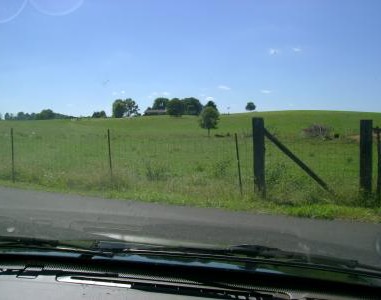
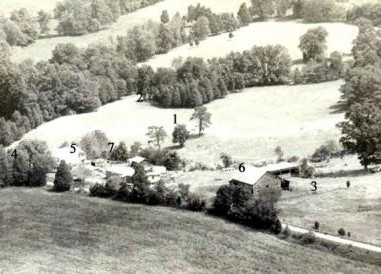
The Carter Farm encounters in drawings.
1. The first meeting of seven year old Janice with the 28 year old Bigfoot Fox in 1972. Her grandfather Robert Carter defended her that time.
2. Fox’s mate Sheba with children, as Janice observed them in 1973.
3. The battle of Fox with a stranger Bigfoot. His small (3-4 year old) son Blacky helping him. The same 1973.
4. The grandfather teaching Fox to cook marshmallow on fire.
5. Fox cooking marshmallow himself.
1. Janice meeting Fox in the house’s basement, April 2002.
2 (color). Janice pulling out hair from Fox’s hand when giving him some garlic. March 2004. This montage made by Lidia having used Igor’s photograph of Janice with Igor as a Bigfoot. She was standing in the same dress and position as then. After the first attempt of drawing Janice corrected several times some details until Lidia achieved similarity.
3. Lidia’s congratulation to Igor on his birthday of 2004. She drew my dream – to have an interview with Fox.
4. The case with occasional killing of gul’bi-yavan – Tajik name of wild man – in 1925 on the Pamir mountains. The case was described to the Commission of the Academy of Sciences by KGB General Michael Topilski
5. The military doctor Vazgen Karapetyan checking up a captured captar – the local name of wild man – in Daghestan, Caucases, in 1941, during the war. He also gave the information about the case to the same Commission.
6. The case of capturing a wild man and keeping him in the automobile luggage compartment by four guards of an apple garden near town of Saratov, 1989. After several hours they let him ran away because of strong bad smell of him.
About Loren Coleman
Loren Coleman is one of the world’s leading cryptozoologists, some say “the” leading living cryptozoologist. Certainly, he is acknowledged as the current living American researcher and writer who has most popularized cryptozoology in the late 20th and early 21st centuries.
Starting his fieldwork and investigations in 1960, after traveling and trekking extensively in pursuit of cryptozoological mysteries, Coleman began writing to share his experiences in 1969. An honorary member of Ivan T. Sanderson’s Society for the Investigation of the Unexplained in the 1970s, Coleman has been bestowed with similar honorary memberships of the North Idaho College Cryptozoology Club in 1983, and in subsequent years, that of the British Columbia Scientific Cryptozoology Club, CryptoSafari International, and other international organizations. He was also a Life Member and Benefactor of the International Society of Cryptozoology (now-defunct).
Loren Coleman’s daily blog, as a member of the Cryptomundo Team, served as an ongoing avenue of communication for the ever-growing body of cryptozoo news from 2005 through 2013. He returned as an infrequent contributor beginning Halloween week of 2015.
Coleman is the founder in 2003, and current director of the International Cryptozoology Museum in Portland, Maine.

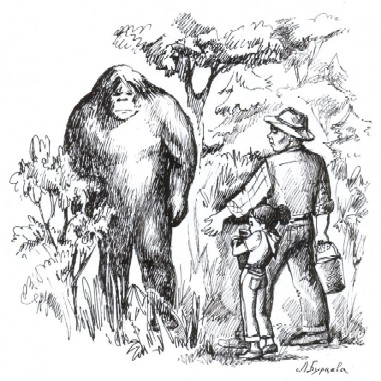
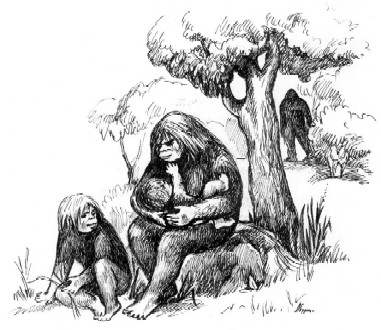
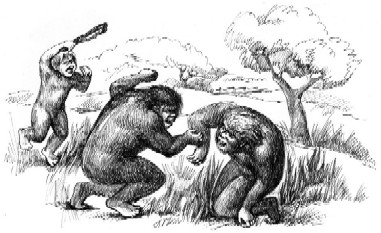
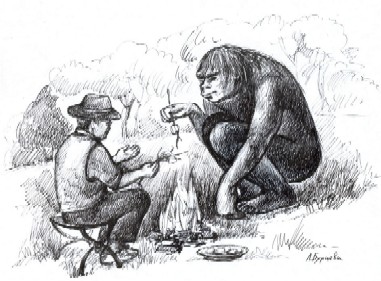
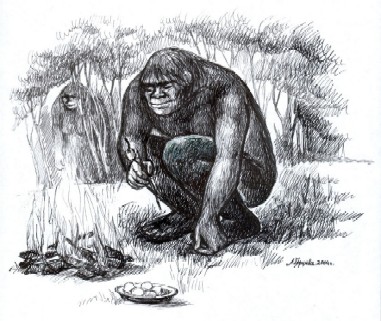
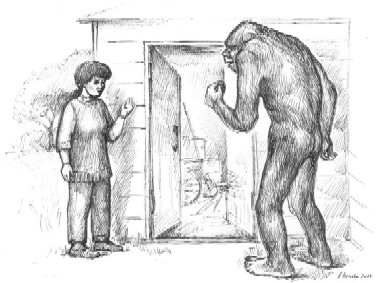
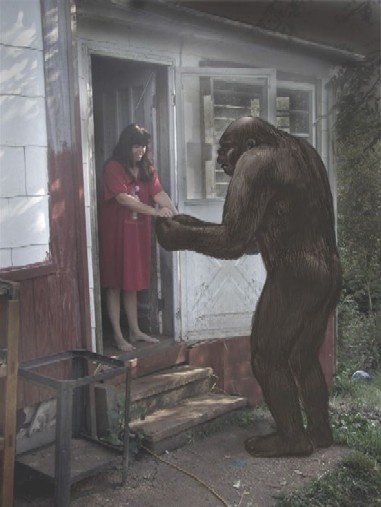
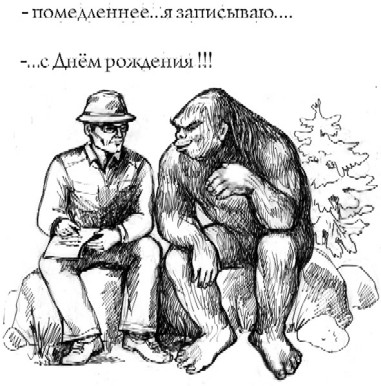
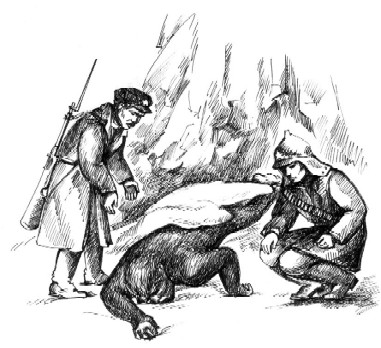
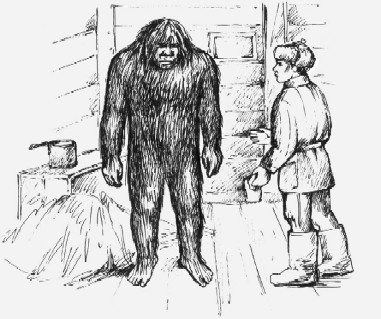
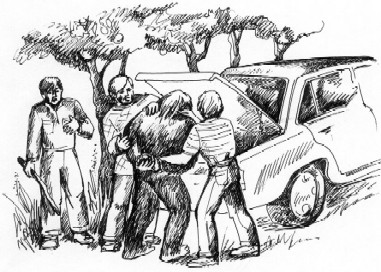









Nicely drawn illustrations, but I prefer my comic books in 4-color format.
The original book was very entertaining.
So full of crap. Why even entertain her ridiculous claims of co-habitating wiht any bigfoot? She claims they even speak english? C’mon. She’s lived with them her whole life? no pictures? Stools samples? Hair? blood? anything? Sheesh.
Was Fox named after Fox Mulder?
I’ve always been intrigued by this story. Interesting, nevertheless.
There is a interesting book from Dmitri Bayanov explaining all this storys happened in Russia. I don’t know if this book was also published in English. In german it is called: “Auf den Spuren des Schneemenschen. Der russische Yeti” von Dmitri Bajanow von Kosmos Verlag.
She claims they even speak english? C’mon. She’s lived with them her whole life? no pictures? Stools samples? Hair? blood? anything? Sheesh.
I don’t believe these stories. These seem so unlike the other Bigfoot accounts of the past few decades that they have not seemed worth the time; then again, witness accounts from before around 1960 seem more varied and more intense. (So much for the idea that the accounts are “remarkably consistent” — at least until the ones that refuse to fit the mold have been trimmed out.)
But let’s be consistent for a moment. At least some of the American Indian legends which are trotted out by believers as evidence also show the Sasquatch as being basically a kind of man. If the Red Man can learn the White Man’s language, why not the Hairy Man, too? And if the native legends cannot be trusted on that point, why should they be trusted enough to be “evidence” of Bigfoot at all?
As for the rest, I suppose it depends on personalities and what one thinks of as normal. One student in our summer research program seemed to take about a hundred pictures a day. I’m on the other extreme; I almost never take pictures. Most people take far more than I do, but until recently taking photographs was still not an everyday thing, since it required a separate camera and film to be developed.
Still less have I saved hair, blood, or stool samples from even my favoite pets. Who would? It is precisely someone who “lived with them her whole life” who would be the last to think of collecting such samples.
The whole world is looking for bigfoot, the most convincing evidence is spotty at best, and you think this backwards lady from tennessee keeps them as pets? She claims they knock on her door and ask for food, (in english?). Almost every cell phone manufactured today has a camera, most have video. Tennessee is rife with Walmart stores, Target, Kmart, various drug stores, or any other number of places to pick up a cheap camera. I’ll send her a camera fer cryin’ out loud, then she can snap ONE DECENT PIC. Why heck, even an audio recording of the exchange, would be SOMETHING. You can give this story benefit of the doubt I suppose, but as for me if looks like crap, acts like crap and smells like crap, then it’s crap. Personally I think this kind of silly attention seeking only serves to further bolster the skeptics, and encourage the attitude of people not reporting any genuine sightings out of fear of being ridiculed. But, to each his own, I suppose.
Fhqwhgads, in regards to doubting or taking with a grain of salt the First Nations in regards to the Hairy Man (and I have my tribal registration), I’m afraid that it has to be done. First Nations stories of wildlife and their antics are often given the ring of truth by the terse, everyday style in which they are told, and these we should pay attention to. But their stories are also filled with literally talking animals, animals of great wisdom and age, underwater villages, people (usually maidens) who are transformed into spiders or rabbits, bears or deer, or stars. These stories we need to take for what they are; metaphors and parables, used to both entertain and instruct and they CANNOT be taken literally. This may open us to charges of cherry-picking our stories to bolster the claims of the Bigfoot, but given the choice of cherry-picking the stories or trying to make the story of the 7 maidens who were turned into the Pleides star cluster a literal one, I’ll take the cherry picking.
And as for why should anyone ever try to collect blood, hair, scat, whatever there might be to prove the existence of these creatures, especially their friends, I’ll say that proving their existence is the surest way possible of protecting them. And that’s what friends are for, not handouts of garlic.
@graybear
Yes, I’m afraid I do think it is cherry picking, which means that the best the stories can be is suggestive — unless, maybe, someone really familiar with the stories can point to distinctly different genres. For example, Aesop is also full of talking animals, but when anything like that happens in the writings of Livy or Plutarch or even Herodotus, it is an important omen that must be interpreted. Maybe it would be enough to find out of Sasquatch speaks in the stories where other animals speak but is silent in stories where the other animals are also silent? That would be interesting to know.
I’m afraid that the problem may be, though, that the distinctions between fable and history or even between man and animal are not present in Native American culture the way they are in European culture.
@murse2k7
No, the Carter Farm story smells very fishy to me, from the little I know. But then, I’m a skeptic. I don’t dogmatically reject the existence of Bigfoot, but I await more high-quality evidence before being convinced.
I just think that if you are going to keep some witness accounts and reject others, there needs to be a more stringent and objective test than “the sniff test”. After all, many people will say ALL Bigfoot encounters smell fishy.
If she didn’t take a picture, let alone get a stool or blood sample, in the 1970’s, that’s no surprise. But just looking at the captions, you’re right: 2004 is indeed getting close to the time when everyone had a cell phone, and just about every one has a camera. (I probably have one of the last not to have one.)
I personally think her story is a load of old twaddle, maybe she is even mentally ill ?
Manticora- The book is indeed available in English, my secondhand copy of it cost £50 around 60 Euros or $75, it is hard to get hold of nowadays hence the high price.
I love these stories and find no reason why they cannot be held as real. I personally do not care about exposing Bigfoot as do many others. It’s a belief as many of us would believe in religion and the unseen or invisible. There are people who are protectors in this world who do not need the recognition of their fellows or peers. They just do what’s right. I personally beleive them to be Sainted and Blessed. Most people cannot understand this nowadays and thats the real sadness here on this blog and in life.
Keep your stool samples and hair and keep watching Finding Bigfoot and see in the end where it leaves you.
Read Scott Nelson’s analyses. He doesn’t claim they speak English – he much more reasonably says they sprinkle English words into their conversations. So many generations listening in from the shadows, and so many decades Scott spent under the cans. I hear English words and phrases in the Sierra Sounds, and I don’t think they’re mere cognates, either.
Fhq-whatever. Well, actually I agree with you that the Native American stories about Bigfoot are cherry-picked; every time anyone chooses this story (about a regularly described Bigfoot) over that story (about a story about talking otters that magically transform into beautiful maidens; a favorite theme) they are in fact cherry-picking. Every time a jury convicts someone on the basis of their story about just how that meth lab that was not theirs got into their broken down van in their back yard, that’s cherry picking, too. Anytime you don’t believe your little girl about just how all that make-up got smeared over her and her little brother’s face, you’re cherry-picking. So cherry picking is something that is universally done; it is actually an act of judgement, you judge that this tale is worthy of serious attention, that one to use for mulch.
I don’t really understand your reference to Aesop, Livy, Plutarch and Herodotus. Aesop’s tales were readily acknowledged as fables, hence the name Aesop’s Fables, which is not the case with Bigfoot tales, we have to winnow through the tales and decide which are worthy of serious attention and which belong on Saturday morning TV. And the ancient Greeks, including Herodotus, were quick to believe in dog-headed men, men who had only one fused leg, pythons big enough to kill elephants, and a host of other weirdos. Does that mean we should discount all their other work? Or do we do more cherry picking?
And remember, this all started about the Carter farm, which is cherry picker heaven; some of the stories have , not a ring of truth, but maybe a dull clunk of ‘well, I don’t know, that sounds like maybe it might possibly under some circumstances in a really bad thunderstorm happen I really want to believe this’. I’d like to believe it, but I’ve cherry picked my way through the Carter Farm stories and in my judgement they are at best hallucinations.
‘So much for the idea that the accounts are “remarkably consistent” — at least until the ones that refuse to fit the mold have been trimmed out.’
I’ve read hundreds and hundreds of sighting reports.
When one has done that the Carter story stands out, like a warehouse full of sore thumbs, as inconsistent, and droppable.
And not only for its details, but for this alone:
Anything that has allegedly gone on for this long; that the principals are eager to make public; and for which they have not one piece of legitimate evidence, smells ranker than a barrel of fish.
@graybear
As I said, the Greeks had more than one genre of writing; they maintained a sharp distinction between a fable, a history, a play, and a philosophical discourse. That kind of analysis even of their own writings is a part of their culture. I am not sure if those distinctions arise in North American cultures.
You’re right that Herodotus included some pretty tall tales, but other Greeks criticized him for this. Also, it is noteworthy that the farther from Greece, and hence less verifiable, a story was, the more likely it was to have fabulous elements. Finally, he did not vouch for the truthfulness of what he was writing, only that he was faithfully passing along what he had heard when he was researching the histories. This is at least in part no doubt true, because he patenly disbelieved that Phoenicians circumnavigating Africa saw the noonday sun to the NORTH, and that the Nile originated in snows.
All this means that Herodotus is more trustworthy when he talks about the Greeks than about the Egyptians, more trustworthy talking about the Egyptians than about the Persians, and more trustworthy talking about the Persians than about the (subcontinental) Indians. There are signals both in the structure of his writing and in the way it is referred to within his culture that establishes it as a work of history, and there are signals within his work to indicate where he is most trustworthy and where he is not.
Similar markers may or may not occur in Native American tales. It would be worth knowing if the Sasquatch stories are more similar to accounts of Little Bighorn or to Fox jumping over Coyote to bring him back to life.
I’ve lived and hunted in SE Texas all my life except for 5 yrs in the USMC all that time I’ve seen grey wolves and very small black bears not often but enough times to know they are here in all that time (i’m 43 now) i’ve never even thought of taking a picture or collecting scat or even hair samples.The simplest thing i could is shoot one next time i see one but i won’t.I just found out neither of these animals are supposed to be here.
My point is this …at first i didn’t think it was a big deal seeing wolves or bears now i know what i know I don’t want to put them at risk of other people finding them and maybe killing them…….Just something to think about
Grey wolves? This is the Mexican Wolf, right? Why would it be so surprising to see a Mexican Wolf in Tejas? I know… sorry!
not supposed to be any wolves other than coyotes in the state of Texas
There are Mexican Wolves in Big Bend, and perhaps other areas as well. It is no big deal to cross the Rio Bravo for people OR wolves.
that would be the Rio Grande and either way it would be around 800 miles from me